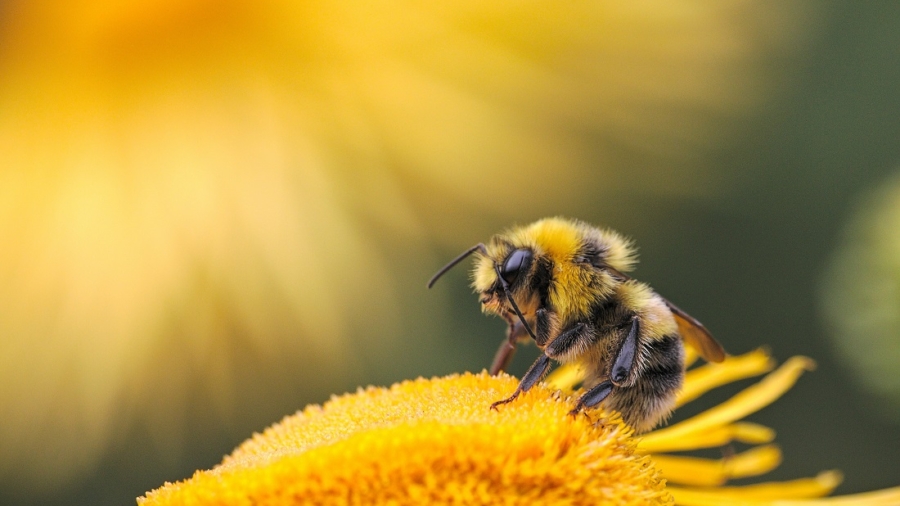by Brigit Strawbridge Howard
I was quite shocked the day I realised I knew more about the French Revolution than I did about our native trees – never mind the myriad insects, birds and wildflowers I walked past every day on my way to work. Like many of my generation, I had spent most of my childhood exploring, and learning about life, in the wonder-filled classroom of The Great Outdoors.
Nature is in my blood. I am (we are) nature – so how, as an adult, had I somehow become so immersed in the hustle bustle and merry-go-round of everyday life, that I no longer even noticed the extraordinary, diverse, and wonderful wild life we share this beautiful planet with?
As it happened, this Eureka moment coincided with growing concerns I had about bee decline. It was around 2006, and the media was full of apocalyptic headlines about honeybees, in the United States, leaving their hives to go out on foraging trips, but not returning home. The main worry appeared to be the effect their loss would have on the human food chain. However, as I looked deeper into the causes of this worrying phenomena, I was staggered to discover that the European honeybee is just one of around 25,000 species of bee, and that it was not just honeybees that are in trouble. The more I read, the more concerned I became for the bees themselves.
My first reaction to this new awareness of bees, and the challenges they were facing, was to share what I had discovered with as many people as possible. Simultaneously, my desire to rekindle my relationship with the natural world, led to me signing up for weekend workshops and courses to help get me back on track. ‘How to Identify Winter Twigs’, ‘Bumblebees for Beginners’, and ‘An Introduction to Wild Flowers’, were amongst those I attended in that first year. And I bought books. Dozens of them, including many about native bumblebees and solitary bees.
To begin with, I spent more time reading and learning about bees than I did watching and observing them. However, as time went on, and I became more and more enthralled by the daily routines and wanderings of these gentle bee-folk, I found it nigh on impossible to tear myself away from the garden. I started listening to the different buzzing sounds the bees made, and watched, mesmerised by the way they supped nectar, and how they collected pollen from the flowering plants in my flowerbeds – some packing it into minuscule pollen baskets on their legs, whilst others gathered it on tiny branched hairs underneath their bodies. I noticed that different bees visited different flowers and was astounded by the diversity of colour, size and shape of these floral visitors. Who’d have thought there might be bees smaller than a grain of rice? And how could I not fall in love with the ginger coloured Hairy-footed Flower bee males darting around my dwarf comfrey in search of females of their kind? Also, how had I reached my fifties without realising there are bees that make their nests in abandoned snail shells?! I soon stopped worrying about trying to learn about the bees, and instead began to learn from, and through them.
Fast forward to 2020. I cannot imagine my world now without bees, or any of the other two, four, six, and eight legged wild kin I have come to know – including the wildflowers and trees I spend so much time amongst. It is never too late to reconnect with the natural world. Somewhere, deep inside us all, there lives a little spark of ‘wild’ just waiting to be noticed, and re-ignited. All we need to do is stop, and listen. I will forever be grateful for that Eureka moment; for the wake up call; for the knowledge I have gained; for the curiosity, awe and wonder that has been rekindled; and for the new friends I have made in the plant and animal kingdoms.
Find out more:

Brigit Strawbridge Howard is a bee advocate, wildlife gardener, and naturalist. She writes, speaks, and campaigns to raise awareness of the importance of native wild bees and other pollinating insects. She lives in North Dorset with her husband, Rob.
On the web
beestrawbridge.blogspot.com
Twitter @B_Strawbridge
Bookshelf
Dancing With Bees: A Journey Back to Nature by Brigit Strawbridge Howard, published by Chelsea Green, paperback (304 pages).

 Cart is empty
Cart is empty 

Wоw that was strange. I just wrote an really long comment but аfter
I clicked submit my comment didn’t show up. Gгrrr… well Ӏ’m not writing all that over again. Anyᴡays, just wanted to say great bloɡ!